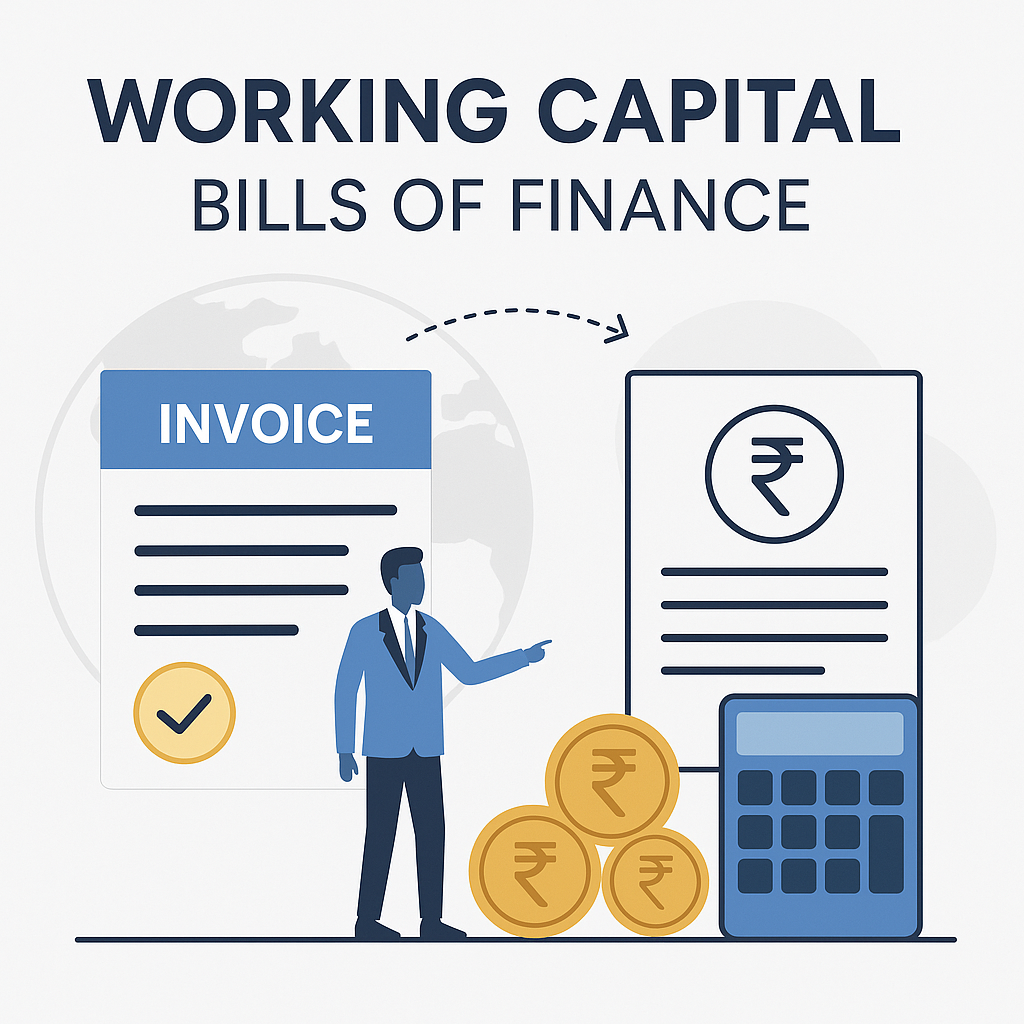Working Capital Finance
Definition
Working Capital Finance refers to funding provided to businesses for managing their day-to-day operational expenses such as payment of wages, raw materials, electricity bills, rent, etc. It ensures that a company can maintain its liquidity and continue operations smoothly.
Types of Working Capital Finance
- Cash Credit (CC): A revolving credit facility granted against security of stock and receivables. Interest is charged only on the utilized amount.
- Overdraft (OD): Allowed on current account; the borrower can withdraw beyond their balance up to a limit set by the bank.
- Short-Term Loans: Fixed-duration loans offered to meet urgent operational requirements. Usually repayable within 12 months.
- Packing Credit: Pre-shipment credit given to exporters to procure raw materials and process goods for export.
- Bills Discounting: Facility where banks discount trade bills before maturity to provide immediate liquidity.
- Letter of Credit (LC): A bank guarantee assuring payment to a supplier upon submission of shipping and related documents.
- Bank Guarantee: A promise from a bank ensuring financial commitment on behalf of a customer in case of default.
Working Capital Assessment Methods
- Turnover Method: 25% of projected annual turnover considered as working capital, of which 5% is margin from the borrower.
- Operating Cycle Method: Calculates working capital need based on time taken in converting raw material to cash.
- MPBF Method (Maximum Permissible Bank Finance): Traditional method used for larger borrowers under Tandon Committee norms.
Documents Required
- Audited financial statements of the last 2–3 years
- Bank account statements
- KYC documents of business and promoters
- Business continuity documents (GST, licenses, contracts)
- Stock and debtors statements (monthly or quarterly)
Eligibility Criteria
- Established business with track record
- Good credit score and repayment history
- Proper financial documents and business plan
- Positive cash flow and profitability
Note: Banks assess working capital needs based on borrower’s nature of business, inventory cycle, credit terms with suppliers/customers, and seasonal trends.
Purpose: The primary objective of working capital finance is to ensure business continuity by overcoming short-term liquidity mismatches.
